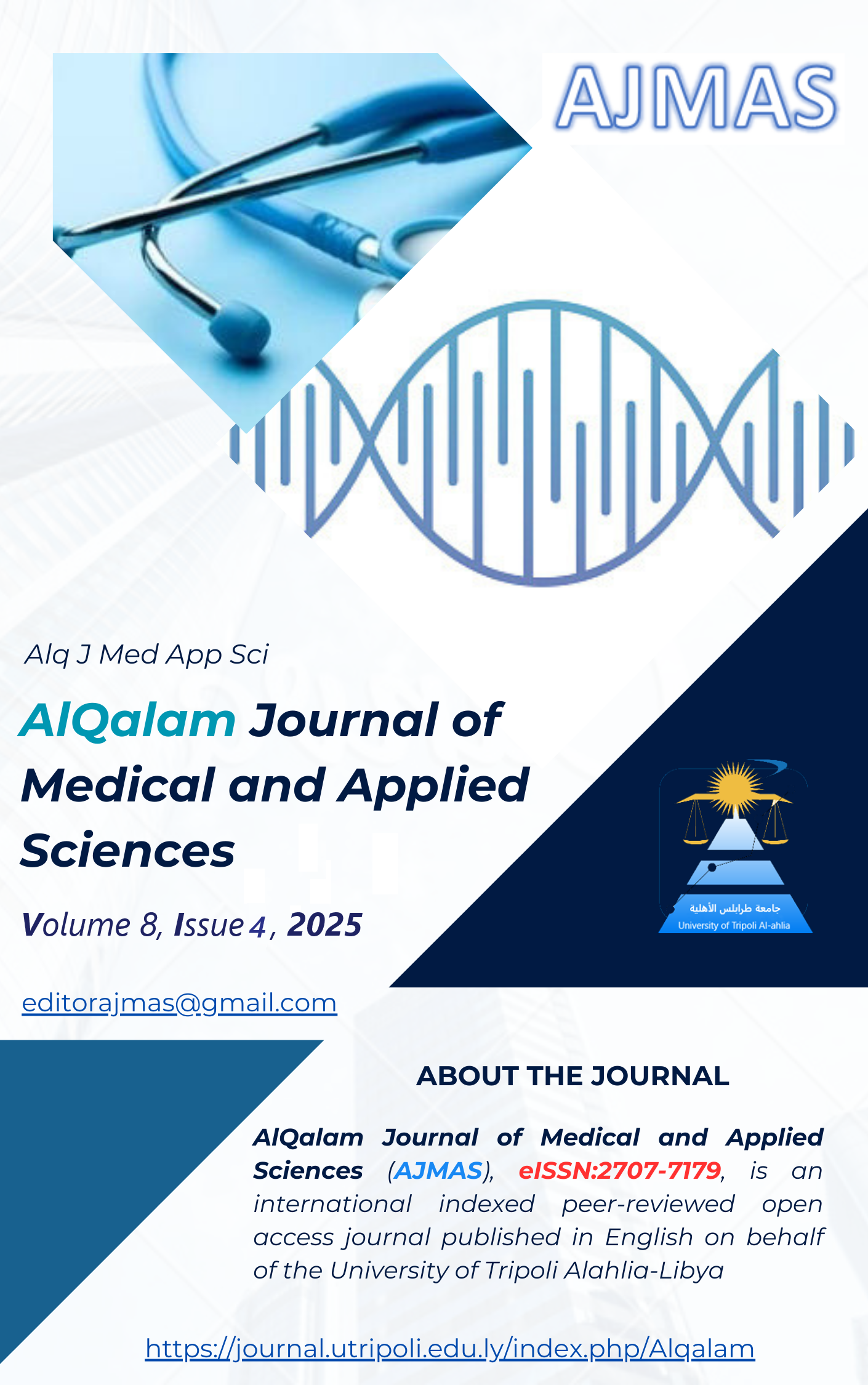Identification and Antibiotic Susceptibility Patterns of Bacterial Isolates from External Ear Infections in Children Aged 0–3 Years at Al-Shahid Emhamed Al-Magarif Educational Hospital, Ajdabiya
DOI:
https://doi.org/10.54361/ajmas.258439Keywords:
Otitis externa, Pediatric infections, Bacterial isolates, Antibiotic susceptibility, Ajdabiya.Abstract
Ear infections represent one of the most prevalent otolaryngological problems in pediatric populations, with potential complications such as hearing loss, delayed speech development, and recurrent morbidity. This study aimed to isolate and identify bacterial species associated with external ear infections in children aged 0–3 years and to assess their antibiotic susceptibility patterns. A total of 80 ear swab specimens were collected from pediatric patients admitted to Al-Shahid Emhamed Al-Magarif Educational Hospital, Ajdabiya, Libya, between July 2023 and January 2024. Standard culture methods, Gram staining, and biochemical assays were employed for bacterial identification, while antibiotic susceptibility was determined using the disk diffusion method. Five bacterial species were isolated: Staphylococcus aureus (35%), Pseudomonas aeruginosa (27.5%), Streptococcus pneumoniae (17.5%), Staphylococcus epidermidis (10%), and Escherichia coli (10%). Staphylococcus aureus exhibited high susceptibility to imipenem (80%), norfloxacin (78%), amikacin, and levofloxacin (75%), with resistance to chloramphenicol. Pseudomonas aeruginosa showed high susceptibility to gentamicin (82%), tobramycin, and chloramphenicol (75%), but was resistant to multiple β-lactam antibiotics. Streptococcus pneumoniae demonstrated high susceptibility to amikacin (96%) but resistance to norfloxacin. Staphylococcus epidermidis exhibited high susceptibility to imipenem (96%), levofloxacin and trimethoprim-sulfamethoxazole (87%), and amikacin, tobramycin, cefuroxime, and meropenem (75%), with resistance to chloramphenicol. Escherichia coli was sensitive only to amikacin (80%) while resistant to other tested antibiotics. These findings confirm the predominance of Staphylococcus aureus and Pseudomonas aeruginosa in pediatric external ear infections and highlight the growing challenge of multidrug resistance. Culture-guided therapy, rational antibiotic prescribing, and regular surveillance are essential to improve treatment outcomes and limit antimicrobial resistance.
Downloads
Published
How to Cite
Issue
Section
License
Copyright (c) 2025 Najma Senussi, Miloud elagaily, Hana Younis

This work is licensed under a Creative Commons Attribution 4.0 International License.















